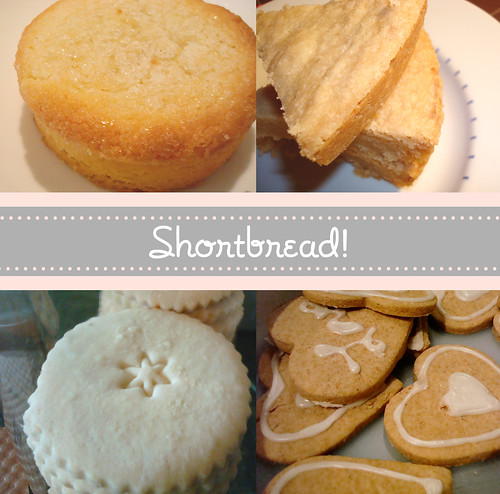
Shortbread is certainly one of life's small pleasures: crispy, tantalizingly buttery, and when done right, the perfect combination of sweet and slightly salty.
short pastry is a nonyeast pastry that has a high ratio of butter to flour. Short pastries bake up crumbly rather than chewy and tend to keep well, owing to their high fat content.
Shortbread is traditionally formed into one of three shapes: one large circle divided into segments ("Petticoat Tails"); individual round biscuits ("Shortbread Rounds"); or a thick rectangular slab cut into "fingers."
Of course, having taste-tested each of these traditional variations, we can report that while they may differ in look, each shape is delicious.
What is the best shortbread cookie recipe?
These days, shortbread recipes are available in a dizzying array of flavors and variations: and from chocolate peanut butter to gorgeously decorated chocolate shortbread (above, photo c/o Whipped Bakeshop) to Earl Grey to cherry almond to even lavender vegan variations, we have enjoyed many of them. But moreover, we love this simple, classic recipe, which is a wonderful springboard for variations (note: though it can be made into round cookies rather than a big round, it is a fragile dough so may be harder to handle in that way).
- 1 cup all purpose flour
- 1/4 cup sugar
- 1/4 teaspoon salt
- 1/2 cup (1 stick) chilled unsalted butter, cut into 1/2-inch cubes
Preheat oven to 300°F. Lightly butter 9-inch-diameter springform pan (we couldn't find ours so used a pie plate--it worked just fine!). Whisk flour, sugar, and salt in medium bowl to blend. Add 1/2 cup butter and rub in with fingertips until mixture resembles coarse meal. Gather dough together and form into ball; flatten into disk. Roll out dough on lightly floured surface to 1/2-inch-thick round. Transfer round to prepared pan. Using fingers, press dough evenly over bottom to edges of pan. Using tip of small sharp knife, score dough into 8 equal triangles, then pierce all over with fork. Bake until shortbread is cooked through and pale golden, about 45 minutes.
Using tip of sharp knife, cut warm shortbread into triangles along scored lines. Run knife around shortbread to loosen. Cool in pan at least 30 minutes. Using spatula, carefully remove shortbread from pan.


